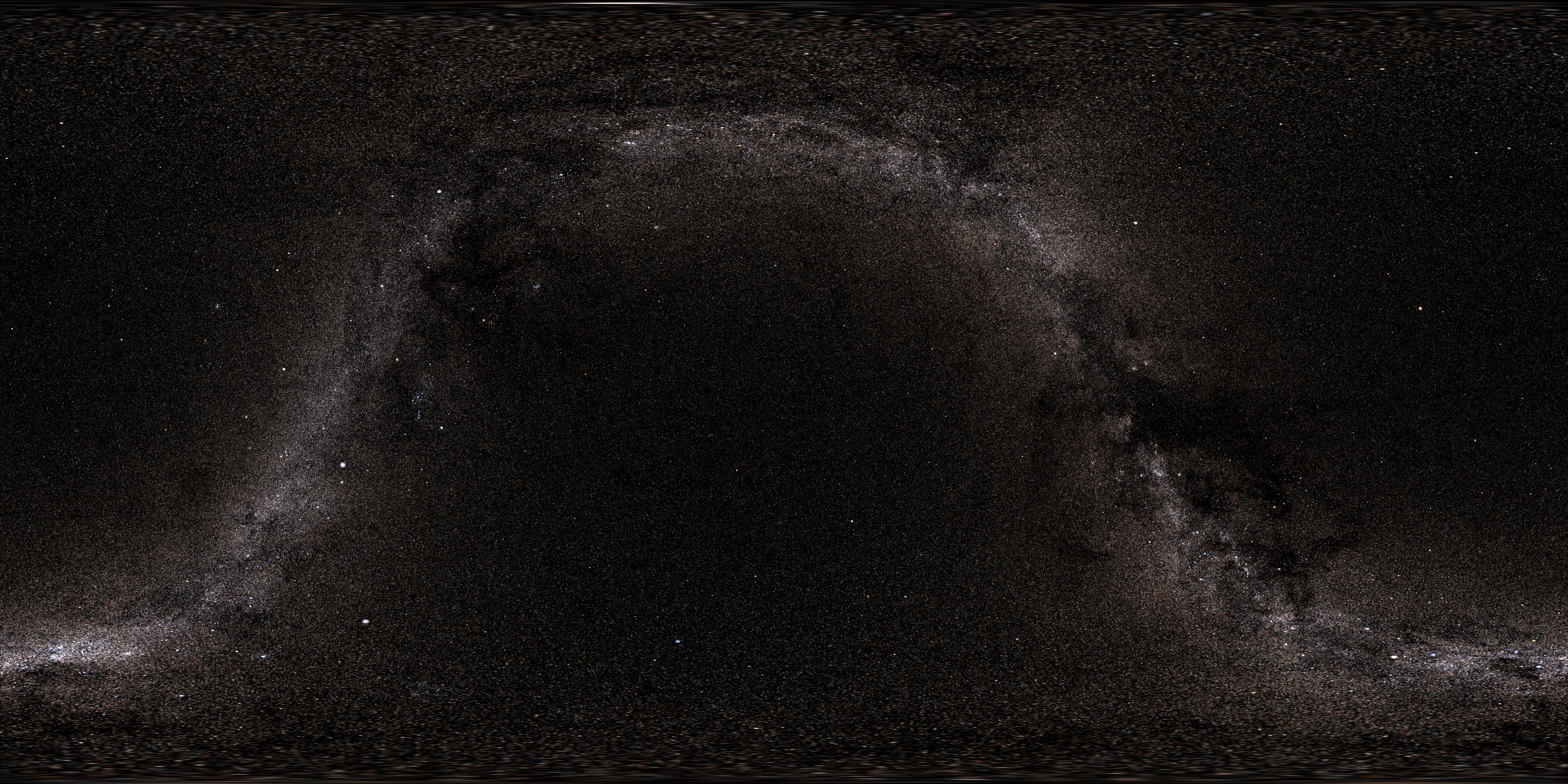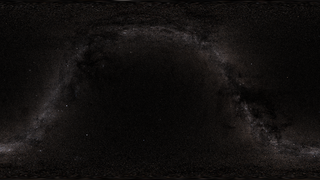The Tycho Catalog Skymap - Version 2.0
The stars are plotted as gaussian point-spread functions (PSF) so the size and amplitude of the stars corresponds to their relative intensity. The stars are also elongated in Right Ascension (celestial longitude) based on declination (celestial latitude) so stars in the polar regions will still be round when projected on a sphere. Stars fainter than the threshold magnitude, usually selected as 5th magnitude, have their magnitude-intensity curve adjusted so they appear brighter than they really are. This makes the band of the Milky Way more visible. Stellar colors are assigned based on B and V magnitudes (B and V are stellar magnitudes measured through different filters). If Johnson B and V magnitudes are unavailable, Tycho B and V magnitudes are used instead. From these, an effective stellar temperature is derived using the algorithms described in Flower (ApJ 469, 355 1996). Corrections were noted from Siobahn Morgan (UNI). The effective temperature was then converted to CIE tristimulus X,Y,Z triples assuming a black-body emission distribution. The X,Y,Z values are then converted to red-green-blue color pixels. About 2.4 million stars are plotted, but many may be below the pixel intensity resolution. The three most conspicuously missing objects on these maps are the Andromeda galaxy (M31) and the two Magellanic Clouds.
Changes from the first version #3442, The Tycho Catalog Skymap: The star generation algorithm now favors use of the Johnson magnitudes when available. This improves the star colors over the previous method. The star intensity profiles are also slightly modified to make the cores brighter with a faster intensity falloff. We have also set the color standard to SMPTE with a gamma of 1.8.
Update: This skymap has been revised. The newer version is available at Deep Star Maps.




Related
Visualization Credits
NASA/Goddard Space Flight Center Scientific Visualization Studio
https://svs.gsfc.nasa.gov/3572
Data Used:
Hipparcos/Telescope/Hipparcos Catalogue
Database - November 1989 - March 1993Hipparcos/Telescope/Tycho 2 Catalogue also referred to as: Tycho Catalogue
Database - November 1989 - March 1993This item is part of these series:
Astrophysics Visualizations
Astrophysics Stills
Keywords:
SVS >> HDTV
SVS >> Milky Way
SVS >> Astrophysics
SVS >> Universe
SVS >> Sky Map
SVS >> Star
SVS >> For Educators
SVS >> Astronomy >> Skymap >> North Celestial Pole
SVS >> Astronomy >> Skymap >> South Celestial Pole
SVS >> Astronomy >> Milky Way
SVS >> Astronomy >> Constellations >> Little Dipper
SVS >> Astronomy >> Constellations >> Big Dipper
SVS >> Astronomy >> Constellations >> Summer Triangle
SVS >> Astronomy >> Constellations >> Orion
SVS >> Astronomy >> Constellations >> Taurus
SVS >> Astronomy >> Constellations >> Canis Major
SVS >> Astronomy >> Constellations >> Scorpius
SVS >> Astronomy >> Constellations >> Saggitarius
SVS >> Astronomy >> Constellations >> Southern Cross
NASA Science >> Universe












